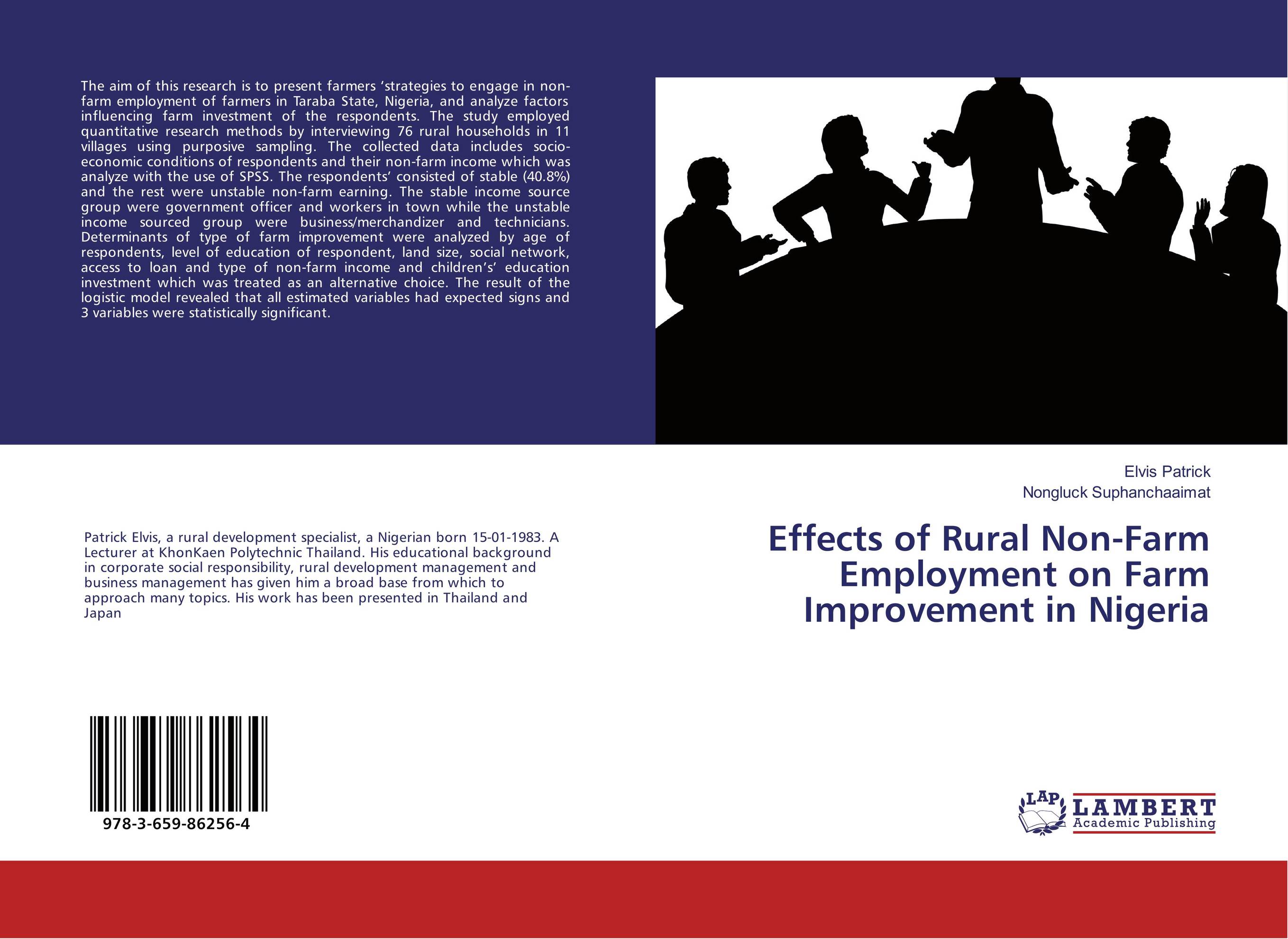| Поиск по каталогу |
|
(строгое соответствие)
|
- Профессиональная
- Научно-популярная
- Художественная
- Публицистика
- Детская
- Искусство
- Хобби, семья, дом
- Спорт
- Путеводители
- Блокноты, тетради, открытки
Effects of Rural Non-Farm Employment on Farm Improvement in Nigeria.

В наличии
| Местонахождение: Алматы | Состояние экземпляра: новый |

Бумажная
версия
версия
Автор: Elvis Patrick and Nongluck Suphanchaaimat
ISBN: 9783659862564
Год издания: 2016
Формат книги: 60×90/16 (145×215 мм)
Количество страниц: 92
Издательство: LAP LAMBERT Academic Publishing
Цена: 31605 тг
Положить в корзину
Позиции в рубрикаторе
Отрасли экономики:Код товара: 156999
| Способы доставки в город Алматы * комплектация (срок до отгрузки) не более 2 рабочих дней |
| Самовывоз из города Алматы (пункты самовывоза партнёра CDEK) |
| Курьерская доставка CDEK из города Москва |
| Доставка Почтой России из города Москва |
Аннотация: The aim of this research is to present farmers ‘strategies to engage in non-farm employment of farmers in Taraba State, Nigeria, and analyze factors influencing farm investment of the respondents. The study employed quantitative research methods by interviewing 76 rural households in 11 villages using purposive sampling. The collected data includes socio- economic conditions of respondents and their non-farm income which was analyze with the use of SPSS. The respondents’ consisted of stable (40.8%) and the rest were unstable non-farm earning. The stable income source group were government officer and workers in town while the unstable income sourced group were business/merchandizer and technicians. Determinants of type of farm improvement were analyzed by age of respondents, level of education of respondent, land size, social network, access to loan and type of non-farm income and children’s’ education investment which was treated as an alternative choice. The result of the logistic model revealed that all estimated variables had expected signs and 3 variables were statistically significant.
Ключевые слова: livelihood, Rural Nonfarm Employment, Farm Improvement



